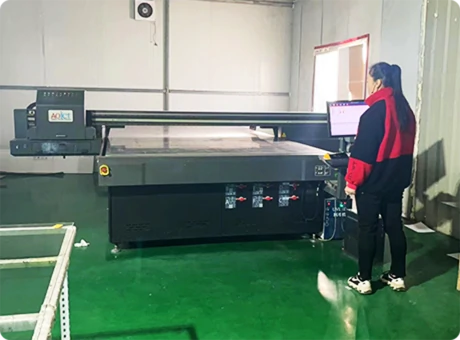The Versatility and Appeal of Tinted Glass
Tinted glass has become increasingly popular in modern architecture, automotive design, and various other applications due to its aesthetic appeal and functional advantages. This specialized glass is treated to reduce the amount of light that passes through, creating a range of shades and tones that serve various purposes, from enhancing privacy to improving energy efficiency.
What is Tinted Glass?
Tinted glass is produced by adding various metal oxides to the glass during manufacturing, resulting in a coloration that ranges from subtle shades to deep hues. Common colors include gray, bronze, green, and blue, each lending a unique character to the buildings and vehicles they adorn. The tint not only affects the appearance of the glass but also influences its performance characteristics, such as solar heat absorption and glare reduction.
Aesthetic Appeal
One of the most significant advantages of tinted glass is its aesthetic versatility. Architects and designers utilize tinted glass to create striking facades that complement their design vision. Whether in residential homes, commercial buildings, or skyscrapers, tinted glass can provide a sleek, modern look that enhances the overall appearance of the structure. The variety of colors available allows designers to experiment with different shades, reflecting and harmonizing with the surrounding environment.
Many people appreciate the sleek look of tinted windows in vehicles as well. Car manufacturers often offer shade options to appeal to consumer preferences, ranging from lightly tinted windows that offer a subtle upgrade to dark windows that provide a distinctive look and feel.
Energy Efficiency
tinted glass
Beyond aesthetics, tinted glass offers significant energy efficiency benefits
. One of its primary functions is to reduce the amount of solar heat entering a building or vehicle. By reflecting and absorbing solar radiation, tinted glass can help maintain a comfortable indoor temperature, reducing the reliance on air conditioning systems. This reduction in energy consumption not only lowers utility bills but also contributes to a building's overall sustainability.
In commercial buildings, the use of tinted glass can significantly minimize glare and the heat buildup associated with large areas of glass facades. This is especially important in regions with high temperatures, where excessive sunlight can lead to uncomfortable indoor environments. Moreover, by decreasing the amount of heat that enters a space, buildings with tinted glass require less energy for cooling, helping to reduce their carbon footprint.
UV Protection
Another important benefit of tinted glass is its ability to filter out harmful ultraviolet (UV) rays. Prolonged exposure to UV radiation can lead to serious health risks, including skin cancer, as well as fading and damage to furniture and interior furnishings. Tinted glass can block a significant percentage of these harmful rays, providing an added layer of protection for occupants and preserving the longevity of interior designs.
Privacy
Privacy is another crucial factor driving the use of tinted glass. In urban environments where buildings are closely situated and visibility into residential or office spaces can be intrusive, tinted glass serves as an effective barrier. It allows occupants to enjoy natural light while obstructing the view from the outside. This balance of light and privacy appeals to many homeowners and businesses alike.
Conclusion
Tinted glass represents a multifaceted solution for modern design challenges. Whether used in buildings or vehicles, its benefits extend beyond mere aesthetics, offering energy efficiency, UV protection, and enhanced privacy. As both environmental considerations and design trends continue to evolve, tinted glass will likely remain a popular choice for architects, designers, and consumers seeking to create functional and visually appealing spaces. Embracing tinted glass not only enhances the style of a structure but also contributes to a greener and more resource-efficient future. Such attributes make it an essential component in today’s architectural and automotive innovations, ensuring its place at the forefront of design for years to come.
 Afrikaans
Afrikaans  Albanian
Albanian  Amharic
Amharic  Arabic
Arabic  Armenian
Armenian  Azerbaijani
Azerbaijani  Basque
Basque  Belarusian
Belarusian  Bengali
Bengali  Bosnian
Bosnian  Bulgarian
Bulgarian  Catalan
Catalan  Cebuano
Cebuano  Corsican
Corsican  Croatian
Croatian  Czech
Czech  Danish
Danish  Dutch
Dutch  English
English  Esperanto
Esperanto  Estonian
Estonian  Finnish
Finnish  French
French  Frisian
Frisian  Galician
Galician  Georgian
Georgian  German
German  Greek
Greek  Gujarati
Gujarati  Haitian Creole
Haitian Creole  hausa
hausa  hawaiian
hawaiian  Hebrew
Hebrew  Hindi
Hindi  Miao
Miao  Hungarian
Hungarian  Icelandic
Icelandic  igbo
igbo  Indonesian
Indonesian  irish
irish  Italian
Italian  Japanese
Japanese  Javanese
Javanese  Kannada
Kannada  kazakh
kazakh  Khmer
Khmer  Rwandese
Rwandese  Korean
Korean  Kurdish
Kurdish  Kyrgyz
Kyrgyz  Lao
Lao  Latin
Latin  Latvian
Latvian  Lithuanian
Lithuanian  Luxembourgish
Luxembourgish  Macedonian
Macedonian  Malgashi
Malgashi  Malay
Malay  Malayalam
Malayalam  Maltese
Maltese  Maori
Maori  Marathi
Marathi  Mongolian
Mongolian  Myanmar
Myanmar  Nepali
Nepali  Norwegian
Norwegian  Norwegian
Norwegian  Occitan
Occitan  Pashto
Pashto  Persian
Persian  Polish
Polish  Portuguese
Portuguese  Punjabi
Punjabi  Romanian
Romanian  Russian
Russian  Samoan
Samoan  Scottish Gaelic
Scottish Gaelic  Serbian
Serbian  Sesotho
Sesotho  Shona
Shona  Sindhi
Sindhi  Sinhala
Sinhala  Slovak
Slovak  Slovenian
Slovenian  Somali
Somali  Spanish
Spanish  Sundanese
Sundanese  Swahili
Swahili  Swedish
Swedish  Tagalog
Tagalog  Tajik
Tajik  Tamil
Tamil  Tatar
Tatar  Telugu
Telugu  Thai
Thai  Turkish
Turkish  Turkmen
Turkmen  Ukrainian
Ukrainian  Urdu
Urdu  Uighur
Uighur  Uzbek
Uzbek  Vietnamese
Vietnamese  Welsh
Welsh  Bantu
Bantu  Yiddish
Yiddish  Yoruba
Yoruba  Zulu
Zulu 

